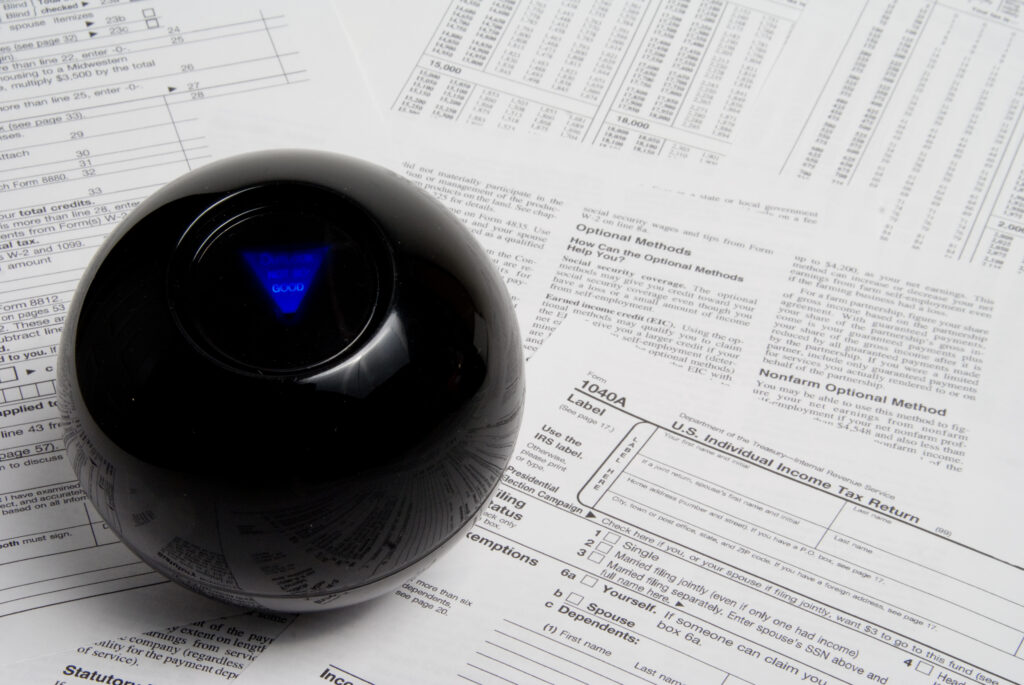Organizational Efficiency: The Anatomy of Your Business

Organizational Efficiency
The Anatomy of Your Business

The first thing to think about when you seek to make your days more manageable and more effective are the parts of your small business, the anatomy. What parts of your business are essential to your success? You'll need to look at your situation for each business to determine it, but this can get you started.
While all businesses share the same fundamental parts, some businesses, especially home solopreneurs, may place importance on different functions depending on their goals. But these potential essential parts of your small business bear consideration so that you can create a solid automation plan.
I will show you how you can create organizational efficiency in all areas of your business, no matter what your business type. This is not about starting a new business but rather how to achieve operational excellence in your business by minimizing waste and maximizing values. Make sure you download the accompanying Workbook and follow along to achieve organizational efficiency.
Organizational Efficiency Workbook
Send download link to:
What's Your Business Type?
Knowing how you have structured your business is vital to determine before you start your automation plans. For example, the way you run and automate an online store where people purchase products will be somewhat different from someone who offers courses or one-on-one personal services.
When you understand the core business, you will know what you sell, who you are selling it to, where your buyers are, and how to find them. You will also see how you're going to distribute the product or serve the customer. Additionally, you know how you stand out from the competition, and you use that to your advantage by differentiating yourself in the marketplace.
So, what is your business type?
Do you have an online store where you sell any type of product, physical or digital? There are many automation tips you can use for online stores.
Do you offer virtual services? Most businesses moved to virtual during the pandemic and continue to stay virtual due to convenience and cost savings. Services offered could range from administrative, one-on-one coaching, social media management, online business management, and so forth. As a service-based business, you will want to organize your business and market yourself differently from an online store where you don't speak to the customers directly yourself and sell products directly.
You may also offer only virtual support and consulting without providing direct service. For example, you may coach your clients to create a sales page, set up a freebie, or set up a discovery call, but you don't do it yourself; you advise them on what to do, and the client with their team does it. This is an entirely different business structure than a business that does the services directly or delivers the product directly.
Suppose you offer classes and "how-to" information to your customers via courses, classes, and content. If you have a business that provides classes, either self-paced or teacher-led, this is a training business. A training business sometimes needs more personal input and engagement than a storefront that sells the complete self-paced course.
There are numerous opportunities for automation in each of these business structures. Get out your workbook and write it out:
- What is the composition of your business?
- What do you do for customers and clients, and how do you do it?
- Are you hands-off or hands-on, or a combination of both?
The more you can document how your business works, the easier it will be to find ways to automate and outsource.
Workbook Task: write out your business structure Send download link to:
Organizational Efficiency Workbook
What's Your Job as The Owner of Your Business?
As a small business owner, you probably think that you have a lot of jobs to do. Some people like to describe the job of a business owner as one that wears many hats. However, your main job description as a business owner is to plan and organize the daily operations of your business.
On any given day, you may be responsible for:
- Developing your business plans
- Arrange financing
- Hiring staff or contractors
- Reviewing sales
- Developing marketing strategies
- Overseeing daily activities
- Identifying opportunities
All these jobs represent your primary function as a business owner, analyzing the performance, whether it is automation or human, to minimize risk. You do not need to do the tasks yourself physically. Remember, your job as a business owner is that of risk management. Realistically, you may have to wear a lot of hats at first, doing all the tasks; the trick is, figuring out when it's time to let go.
Finding and setting up automation in your business is one of your roles as a business owner. By doing so, you will reduce risks associated with your business because you are going to ensure those tasks get done in a timely fashion by someone (or something) who knows what they're doing.
The more you can automate or outsource, the faster your business will grow because you're going to free up your time so you can discover new opportunities for your business.
Do You Know What You Do All Day?
As a business owner, you have a lot on your plate. But, to figure out how to automate your business, you first need to know, in detail, what you do all day long. This exercise will aid you in determining which tasks can be automated, which can be outsourced, and even whether it's something you should be doing at all.
You will have daily tasks, weekly tasks, monthly tasks, and even quarterly and yearly tasks in every business. The best thing to do is get out a calendar and enter the items you know you have to do.
For example, you have to pay quarterly taxes, and you have to balance your books at the end of the month. You must buy a business license each October or January depending on your location and the rules and laws in your area. What you know has to be done should be entered into your calendar and block off the approximate time it will take you to do it.
But what about the daily things you do that generate your income. When it comes to generating revenue, it's essential to specify which actions you are doing that generate income and which activities you're doing that support generating income. Go through the steps you take in your day and write down what you're doing, step by step.
Coaches' example of a typical day:
- Business: Coaches retired teachers starting a second career as independent course and project designers.
- Morning: Checks the mail, email, and Trello to determine if there are any fires to put out before diving into the day. Calls her group coaching clients for the weekly group coaching session. Writes product educational and nurturing emails for a new one-on-one coaching product ready to launch.
- Afternoon: Records part of an online development course. Transcribes the group call and sets up her part as a standalone presentation video.
- Evening: Answers coaching client questions for those who signed up to receive daily emails and, using automation, schedules delivery in the morning.
Of course, this one day is not representative of all the money-making tasks this coach does, nor is it a complete picture of what happens in the business overall. Still, it does give you a great idea about where to start automating and even outsourcing. Once it's written out and you visually see all that you do, it becomes easier to know where you can improve your process.
Workbook task: Take the time to write out every task you do or need to do each day. Send download link to:
Organizational Efficiency Workbook
How to Do More with Less
Many of us believe that being successful means being busy. The truth is, being busy does not mean that you are productive, and many times, quite the opposite. Did you know that multitasking makes you LESS efficient and thereby unproductive? You can also be busy doing the wrong things. The truth is successful people know that getting more done with less implies that the impact you make is more significant than your effort. Now that's a success!
So how do you do more with less? First, you need to Understand your key objectives. What is the point of doing a particular task? Does this task impact any of your critical business objectives or the objective of the one task?
If it's not a front-burner task or something that only you can do, put it on the list for automation and outsourcing.
Once you clean up your list and down to the tasks you need to do, it's time to get organized. Add them to your calendar and create your schedules realistically. For example, you know a task takes two hours and that you need some setup time, so plan three hours. You also want to batch like tasks together. The purpose of this is the fewer steps you can take, the better. For example, if you need to do bookkeeping, save all your booking entries to do one day a week instead of doing it daily.
Next, you want to make sure you are using the right tools. If a tool exists to help streamline your business and eliminate busy work, you need it. There are so many tools out there, developed because of a need, by business owners just like you. I've listed a few in the workbook to help get you started. You can also check out our Resources page to see what we use and recommend.
Now put it into action! Remember when I said turn off all distractions? That goes the same for your tasks. Set up your workspace to eliminate distractions and interruptions. Turn off notifications, your phone, the TV, or anything that can take your mind off what you are doing. Set a timer for each task and track how you are spending it; you will be surprised by the insight you will gain here! Time tracking also helps you gain a better understanding of how long your tasks take.
Remember that being organized in your business is part of what a business owner does. Business owners reduce risk in their business by organizing, planning, and generating new ideas that create new opportunities.
Workbook task: look at each task and prioritize by the impact and effectiveness Send download link to:
Organizational Efficiency Workbook
To learn more, check out our 4-part Time Management series starting with https://thetaskva.com/what-is-your-time-vampire/
The Ultimate Boost in Productivity: Automation and Outsourcing
Being productive is an essential element in any business owner's life. Business owners are busy and need to use every moment as efficiently and effectively as possible. Most business owners continually research ideas that will boost their productivity, but the truth is the ultimate boost in productivity will come from a combination of automation and outsourcing.
Now that you have taken the time to write out your business goals, understand your core business, and audited your internal processes, it's time to apply that knowledge to help you with automating your systems or outsourcing.
Remove Bottlenecks
When you start to automate and outsource tasks in your business as you develop each process, you will notice that bottlenecks are a thing of the past. Because the truth is, in most small businesses, especially those run by people starting them from home with no business experience, the bottleneck is the business owner.
When you want to outsource or automate something, you will need to write down the process to visualize every step, including the impact of the actions. Through these business processes, you will create a situation where you improve every single function you have.
Sometimes lack of skill causes a roadblock. Sometimes you may lack desire or energy because everything becomes so overwhelming. But whatever the reason, if you are engaged in organizing and planning and focused on automating and outsourcing, ensuring that others are responsible for their tasks, you are going to get more done.
Even if you do not have a skill, you can find it in software or find it in an individual or company. Simply put, a sole proprietor or a small business can perform like a big business due to increased capabilities.
Reduce Errors and Mistakes
When you work with software, fewer mistakes will happen, provided you set it up correctly. If you don't know how to do something, you're going to make mistakes as you learn. But if you hire an expert, they're going to make fewer mistakes. If you use technology and set it up correctly, there will be no mistakes.
The truth is, hiring experts or using automation software can reduce your errors and mistakes so much that the cost will produce a fantastic ROI (return on investment).
There has never been a better time to be a small business owner! There is an endless resource of technology to implement in your automation plan and plenty of people to hire in your outsourcing plan. Figure out what you want to do, set your goals for doing it, and then follow through.
The work you produce will be much better when you work with technology and contractors to see your vision come to reality.
Spend Time on Higher Value Projects
Focusing on your primary business, which is the core of your business's existence, is the biggest reason of all to automate and outsource. While you may need to do things in your business as a job, once you reach specific benchmarks, you should automate those tasks that you can and outsource the others to spend time on business planning and idea generation, which is the key to business growth.
When you have more time to judge how your business is performing, and you've developed each process to be the most efficient possible, you're going to have more doors open for you when you need them.
Workbook task: develop your processes Send download link to:
Organizational Efficiency Workbook
To Outsource or Automate, that is the Question
There are numerous things you can automate in your business. Some things you may have already thought about or started, such as email marketing. But others you may not have thought of yet, such as auto file generation, event registration, data collecting, file creation, document sharing, and form filling.
From time tracking to expense management, anything that happens repeatedly is ripe for automation, and think of the many saved hours in your workday and work year. Those are hours you can use to create even more fantastic products and solutions for your ideal audience.
Automate
If you can document the steps you do for a task, you can likely automate a lot of it. From using macros within your documentation to implementing new automation tech, there is probably a way to do it.
The best way to determine what you want to automate is to track what you do each day, week, month, and year. Review the daily process you recorded in your workbook. For tasks that repeat, do a little research about how other people automate that task. You may be shocked to learn how simple automating your business is. Automation is not nearly as expensive or complicated as you may think.
Outsource
As you learn more about business automation, it is essential to understand another way to automate your business, which is by hiring someone else to do the work for you. No automation plan is complete without an outsourcing plan.
Hiring experts to deliver work for you on your behalf is called outsourcing. If you cannot automate it, you can likely get someone else to do it for you. If you outsource to a contractor, they are not employees because you can only make requirements on the deliverables but not on how they use their time creating and producing the deliverables.
A few common areas to outsource are legal work, finance, technology needs, marketing, graphic design, customer care, administrative tasks, and writing. Most of these tasks are cumbersome and overwhelming, and small business owners can save a boatload of time, stress, and money by outsourcing.
As a business owner, you should make it your goal to outsource or automate almost every task in your business. When you outsource more, you free up your time to focus on what you do best.
Wrap Up and Where to Go from Here
Beginning today, start tracking what you do every single day. Don't make any changes yet; simply follow what you're doing. Pay attention to the things that you do that are repetitive. Also, note the tasks you would rather not be doing or spend a lot of time figuring out how to do.
Make a list of these tasks, and then look at the software and tools you are already using to find out if you can add features or integrations with other solutions to get more out of what you're doing.
Most of all, remember that productivity does not mean that you have to be busy all the time. The opposite is true. Being busy is only an indicator of movement, and all movement isn't impactful. Test your results. Measure your efforts so that you can improve as you go. Before you know it, you'll have a smooth-running, mostly automated business and finally have control over your most important resource, your time.
Download our free Organizational Efficiency Workbook and start taking control of your time!
Organizational Efficiency Workbook
Send download link to:
Organizational Efficiency: The Anatomy of Your Business Read More »







